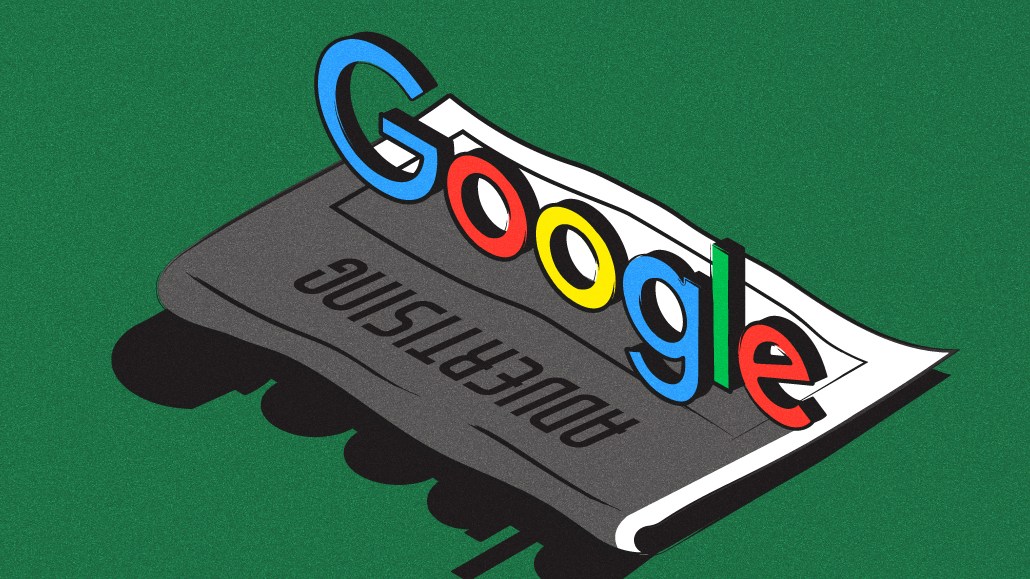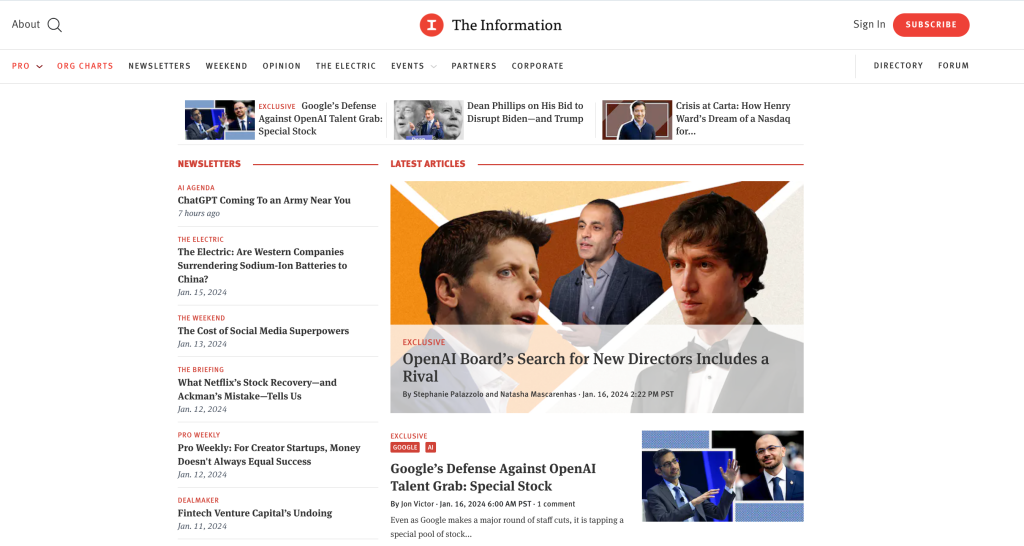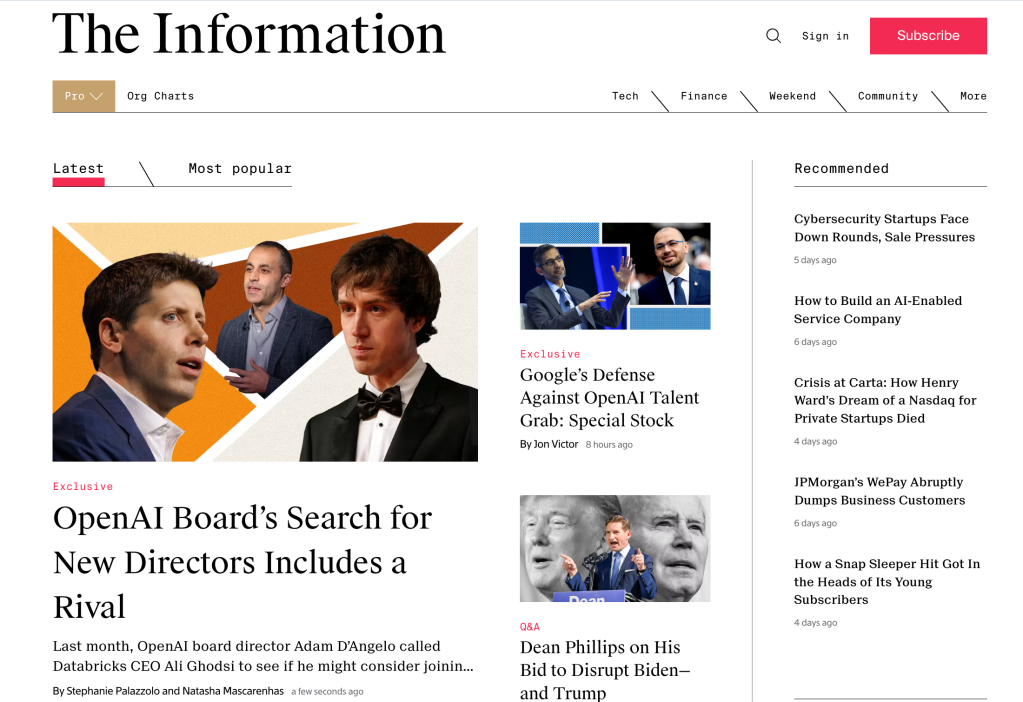Media Briefing: Here are the Privacy Sandbox proposals publishers are prioritizing in early tests

This Media Briefing covers the latest in media trends for Digiday+ members and is distributed over email every Thursday at 10 a.m. ET. More from the series →
Google has officially started deprecating the third-party cookie from its Chrome browser, starting with 1% of its audience this month. And by doing so, it’s enabling advertising and media folks to start playing around with the Privacy Sandbox in a browser unencumbered by third-party cookies in the hopes that it will be a suitable replacement for 1-1 tracking that they’ve become accustomed to.
The Privacy Sandbox is composed of dozens of proposals that are meant to be tested and debated amongst the stakeholders within the digital advertising ecosystem, and only after scaled adoption do they become “web standards,” according to Google’s Privacy Sandbox explainer. But not all of the proposals are worth the time and effort of experimentation, according to publishers.
Five publishers surveyed for this story all stated that Protected Audience API and Topics API were top priorities for experimentation. Meanwhile, Related Website Sets and Shared Storage were not referenced in any of the conversations with Digiday, despite the applications they supposedly offer portfolio publishers.
Part of the piecemeal approach to testing Privacy Sandbox proposals is the lack of human power on publishers’ tech and product teams.
“We’re testing Google Privacy Sandbox where we can, but then again, I don’t have 10 DevOps [employees] to ask to do the work on that. We’re trying to do the bare minimum in Privacy Sandbox,” said Jo Holdaway, chief data and marketing officer at The Independent.
Top priority
As mentioned, Google’s Protected Audience API (a cookieless retargeting protocol that was formerly called Fledge) and Topics API (the cookieless contextual targeting replacement to FLoC) are two highly ranked proposals within the Privacy Sandbox that publishers said they’re actively experimenting with due to their direct dealings with monetizing audiences in Chrome.
“[Protected Audience] is going to be quite a good tool for the remarketing side,” said Holdaway. And both Protected Audience and Topics are seen as positives when it comes to behavioral tracking, she said. “[We are] very interested in that from a behavioral and contextual perspective and data targeting. We’ve now got 6 million registered users. We’ve got 70 million unique users globally. So we have a lot of behavioral data and a lot of first-party data. Segmenting those into audiences is a really sensible way of monetizing our inventory and we’ve already had great success using our DMP in that regard,” said Holdaway.
The expectation is that these two APIs will be of utmost importance when it comes to maintaining ad revenue potential on Google’s browser.
“Those are the biggest for us because they’re going to impact monetization in Chrome. The vast majority of our users are on Chrome and that’s where we see the most value from open market advertising,” said Emry DowningHall, svp of programmatic revenue and strategy at Unwind Media.
One publisher, who spoke on the condition of anonymity, said that while their company is experimenting with Topics through Prebid, they haven’t started testing with Protected Audience because of concerns over ad load times within the browser-level auction.
“What we understand from looking at the documentation is that it’s probably going to add close to a second to the ad load times. And that is a massive amount of time that devalues the publishers’ inventory significantly. So that’s going to be the biggest hurdle … you can lose 5-10% of your inventory if you add a second to your ad load times,” the publisher said.
Justin Wohl, CRO of Salon, Snopes and TV Tropes, said he’s also testing Protected Audience and Topics, but the testing tools themselves are pretty rudimentary and confusing. “It still feels pretty janky and there is no certainty in the approach that says I’m absolutely doing this right,” he said.
Testing without the learnings
For many of the publishers, they’re going into this experimentation phase in the Privacy Sandbox with the understanding they likely will not get the result data they desire right away, or even in the near future. Despite that, most consider experimentation as critical at this stage in the cookie deprecation process.
“It would be a mistake for us not to embrace the Privacy Sandbox as much as we are because we do rely on that for a significant amount of our revenue,” said Holdaway. “Advertisers and agencies aren’t really showing their cards at the moment and they’re being quite reticent in terms of what their strategies are. We have to just assume that Google will still power quite a high number of transactions and dominate the market as they still are.”
“The best thing we can do is lean in as much as possible,” agreed DowningHall, who added that Unwind Media has opted into Google’s beta tests with three of its SSP partners: OpenX, Pubmatic and Index Exchange, though the latter has yet to go live.
Those tests, however, have yet to yield any data for DowningHall’s team to review. In fact, he said so far the best insights into how the Privacy Sandbox is performing in a cookieless environment came from a LinkedIn post from Raptive’s chief strategy officer Paul Bannister.
“Uncookied Chrome users appear to be monetizing about 30% worse than those with cookies. That seems bad, but it’s far better than the 60% worse performance of Safari users,” Bannister wrote.
“I don’t feel confident at all in learning much from the tests that we’ve run … I’m not wasting my resources trying to test and test and test. I’m accepting that it’s going to happen [and] it’s going to scale up,” said Wohl. The only thing he said he feels confident about is that cookie deprecation will continue in Chrome and the rates for cookieless inventory will plummet by 40-60% like they did on Safari and Firefox after those browsers got rid of the third-party cookie.
What we’ve heard
“The proliferation of tech providers who can now give you a clean room solution, it’s going down the route that it went down two or three years ago [with] all the [alternative] ID solutions … Don’t give me 50, I just want one or two, please. And now I’ve got 50 again.”
– Jo Holdaway, chief data and marketing officer at The Independent
The Information redesigns its website
The Information updated its website and logo on Wednesday to improve user experience as it expands its coverage, according to Jessica Lessin, founder and CEO of the business and tech news site and newsletter publisher.
The redesign took a year and is aimed at drawing more attention to breaking news and features around big news events. It will also allow the editorial team to package stories covering one topic more cohesively on the site. Take the OpenAI saga in December. The Information published 27 exclusive news stories about OpenAI’s CEO Sam Altman’s firing and subsequent return to the company.
The main change to The Information’s homepage is the ability for readers to toggle between two separate news feeds: one showing the latest news stories and another showing the most popular stories. The Information’s tight paywall prevents non-subscribers from reading articles.
When The Information launched 10 years ago, the team focused on breaking news about tech companies, Lessin said. Since then, the publisher has expanded to additional verticals like finance, feature stories, a weekend section and about a half-dozen newsletters. The Information has 475,000 paid subscribers and unpaid newsletter subscribers, according to Vanity Fair. To coincide with the website redesign, The Information offered a 25% discount on its $399 annual subscription (or $749 for a Pro subscription).
Lessin plans to grow The Information’s team “across the board” in 2024, with a specific focus on covering tech more aggressively in Asia. At least one new hire in the region will join the team of about 70 employees later this year, Lessin said. She declined to share more details. – Sara Guaglione
Here are other site updates:
- The site’s navigation bar now highlights tech and finance, The Information’s primary beats.
- Categorization tags (such as “AI” and “Google”) above headlines have been minimized to clean up the look of the homepage, relying more on on-site article recommendations.
- Editorial teams now have more tools and flexibility to create curated article collections on the website, especially helpful around big topics that crop up like OpenAI, Lessin said.
- The Information updated or custom rebuilt over 200 site pages and 1,600 assets.
Here’s what the site looked like before:
And now:
Numbers to know
<60 million: The average number of monthly visitors to The Washington Post’s website at the end of 2023, down over 50% from four years ago.
$55 million: The amount of advertising revenue The Messenger expects to earn in 2024, up from the $3.8 million it generated in 2023.
35%: The percentage of Twitch’s total headcount that was impacted by layoffs last week, equating to approximately 500 roles.
What we’ve covered
Professional publishers show out at Davos amid spikes in event sponsorship revenue:
- The World Economic Forum (WEF) in Davos is the place for publishers’ events teams to showcase their ability to convene top brass, and it appears that advertisers are more willing than last year to pay to share that space.
- Axios, Bloomberg, Fortune and Time all increased the number of events and sponsorship revenue earned at Davos this year.
Read more about why publishers doubled down at the WEF in 2023 here.
How theSkimm plans to grow its new wellness newsletter to 1 million subscribers:
- TheSkimm plans to reach its goal of 1 million subscribers to its wellness newsletter, Skimm Well, by the end of 2024.
- The newsletter currently has 100,000 subscribers after launching six months ago.
See how theSkimm is leaning into the wellness vertical here.
Publishers show optimism for their own companies in 2024 — but not the media industry:
- New Digiday+ Research found that nearly two-thirds of publisher pros said they agree that they’re optimistic about their companies’ prospects this year.
- Meanwhile, only one-third of publisher pros somewhat disagreed that they’re optimistic for the media industry as a whole in 2024.
Learn more about the state of optimism in the media industry here.
WTF is accreditation for Black-owned publications?
- Advertising agencies started committing more ad spend to minority-owned publishers, but in order to gain access to those budgets, four execs from Black-owned media companies said they need to prove that they are non-white owned.
- Who is asking for these accreditations and what is the process for obtaining said proof?
Learn WTF is going on with diversity accreditation here.
Freelancers lament stagnated rates amidst inflation:
- Six freelance journalists say rates from large national publications haven’t changed in years.
- To stay on top of inflation, they’ve had to take on more work or supplement their income with other pursuits.
Read about the stagnation of freelancer rates in media here.
What we’re reading
Washington Post reporters voice concerns after buyouts:
The buyouts that eliminated about 10% of the Washington Post’s staff have left the newsroom feeling disadvantaged in the competitive news industry, per a letter sent by a group of Post journalists to executive editor Sally Buzbee and new publisher and CEO Will Lewis. According to Vanity Fair, the diminished news research department was of particular concern amongst employees.
Red Ventures, which bought CNET and a few other sites from ViacomCBS for $500 million in 2020, is looking to offload the tech news and reviews brand this year, according to Axios. The hope is that the company will fetch at least $250 million for CNET as a standalone title.
Page Six will become a standalone brand:
Previously the New York Post’s gossip column, Page Six is being positioned as its own brand within the portfolio, according to Adweek. Over the past year, the company has been building out the new video studio, Page Six Studio, to increase its video content.
CNN’s new CEO is shaking up news operations:
This week, CEO Mark Thompson shared his plan to combine all of CNN’s journalistic operations into one team that will provide content for all its content arms including TV, streaming and digital platforms, The Wall Street Journal reported.
Podcasts are seeing fewer downloads thanks to new Apple measurement protocol:
Podcast listenership is declining for some of the industry’s largest shows, thanks in part to a new protocol unveiled by Apple, which stops automatic episode downloads for users in its Podcasts app who miss five episodes of that show in a row, Semafor reported.
More in Media

WTF is behind the explosion of faceless creators?
Brands are rapidly increasing their spending on faceless creators, showing the unique benefits of working with this type of influencer.

In Graphic Detail: As ‘Grow a Garden’ booms, a new report shows the marketing power of Roblox
The explosive growth of “Grow a Garden” has brought new attention to Roblox — and rejuvenated marketers’ interest in its advertising power.

Brand deals surge for golf creators as the sport’s popularity spikes
Golf is booming, and so is influencer marketing. As a result, golf creators are signing an unprecedented number of brand deals in 2025.










